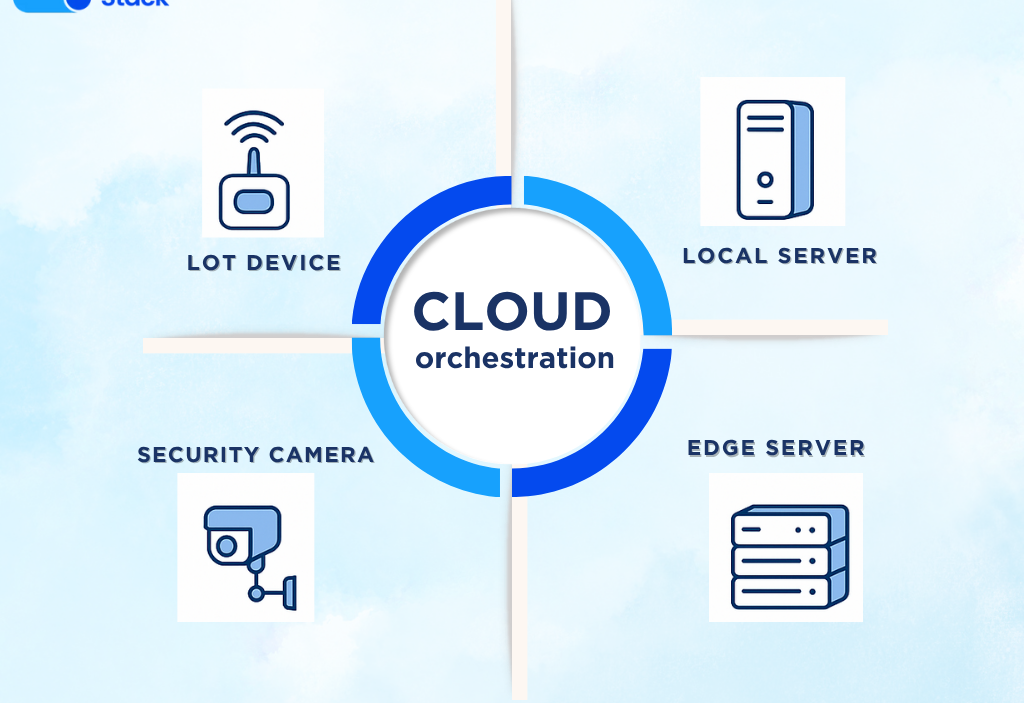Cloud computing has long been the backbone of modern digital transformation. But as applications become more latency-sensitive and data-intensive, especially in fields like IoT, autonomous systems, and real-time analytics, a complementary approach is gaining traction: edge computing.
Edge computing brings computation and data storage closer to the source of data generation, reducing latency and offloading workloads from centralized cloud data centers. It doesn’t replace cloud computing, it enhances it.
In this blog, we’ll explore what edge computing is, how it fits into modern cloud strategies, and where it’s unlocking new capabilities across industries.
What Is Edge Computing?
Edge computing refers to the deployment of compute, storage, and networking capabilities near the data source, typically at or near endpoints like IoT devices, sensors, or local edge servers. This architecture reduces the distance data must travel, enabling faster decision-making and more efficient bandwidth usage.
Key Characteristics of Edge Computing:
- Proximity to end users or devices
- Low-latency processing
- Local data filtering and analytics
- Decentralized architecture
- Offline resilience
Why Edge? The Limitations of Cloud-Only Architectures
Cloud computing provides scalability, flexibility, and centralized control. However, it falls short in scenarios where:
- Milliseconds matter (e.g., autonomous vehicles or industrial robotics).
- Bandwidth is constrained or expensive.
- Connectivity is intermittent or unreliable.
- Data sovereignty and privacy require localized processing.
Edge computing fills these gaps by offloading time-sensitive or bandwidth-heavy tasks from the cloud to the edge.
How Edge and Cloud Work Together
Rather than replacing the cloud, edge computing extends it. Here’s how the two models collaborate:
| Edge | Cloud |
| Handles real-time, localized processing | Performs deeper analytics, long-term storage, and orchestration |
| Reduces latency for mission-critical workloads | Aggregates data from many edge devices |
| Filters and preprocesses data before cloud ingestion | Runs AI model training and large-scale computation |
| Enables offline and local failover scenarios | Provides centralized updates and control |
Think of the edge as the first responder to data, and the cloud as the strategic command center.
Use Cases Where Edge + Cloud Excel
1. Industrial IoT (IIoT)
- Edge: Monitor machine data in real-time to detect anomalies and trigger alerts within milliseconds.
- Cloud: Aggregate historical data across facilities to train predictive maintenance models.
2. Smart Cities
- Edge: Analyze traffic flows and control signals on-site.
- Cloud: Optimize transportation networks using macro-level insights.
3. Retail
- Edge: Process in-store customer interactions via sensors and cameras.
- Cloud: Analyze consumer behavior across locations and run centralized promotions.
4. Autonomous Vehicles
- Edge: Make split-second navigation decisions.
- Cloud: Manage fleet operations and long-term learning from aggregated driving data.
5. Healthcare
- Edge: Monitor patient vitals with wearable devices.
- Cloud: Store patient records, run diagnostics, and support telemedicine platforms.
Architecting for the Edge: Strategic Considerations
1. Distributed Compute Platforms
Use services like:
- AWS IoT Greengrass
- Azure IoT Edge
- Google Cloud’s Anthos at the Edge These platforms allow cloud-like capabilities to run closer to devices, often integrated with container orchestration like Kubernetes.
2. Edge AI and ML
Deploy pre-trained machine learning models on edge devices to enable local inference. Use the cloud to train and retrain models based on broader datasets.
3. Connectivity and Sync Strategies
Not all edge environments have consistent internet access. Build for:
- Offline resilience
- Data synchronization
- Eventual consistency models
4. Security and Governance
Security at the edge must be:
- Built-in from the hardware level
- Continuously updated via secure cloud controls
- Aligned with data governance and compliance requirements, especially when processing sensitive data locally
Challenges in Implementing Edge Computing
| Challenge | Solution |
| Managing distributed environments | Use centralized orchestration with tools like Fleet Manager, AWS Systems Manager |
| Maintaining security across endpoints | Automate certificate rotation and use secure boot mechanisms |
| Model drift in AI at the edge | Set up regular cloud-driven model updates and telemetry collection |
| Operational complexity | Leverage managed edge services and cloud-native tooling for consistency |
Real-World Example: Edge in Agriculture
A smart farming company uses:
- Edge devices to monitor soil moisture and weather in real-time, enabling autonomous irrigation decisions.
- Cloud services to analyze seasonal trends, optimize yield predictions, and provide a user dashboard for farmers.
This hybrid approach cuts water usage, increases yields, and provides a seamless experience, even in rural areas with limited connectivity.
How Edge Changes Your Cloud Strategy
Organizations that embrace edge computing need to rethink traditional cloud strategies in a few key areas:
- Design for decentralization: Not everything happens in the data center anymore.
- Develop hybrid architectures: Build systems that fluidly integrate edge and cloud components.
- Prioritize data governance: Define which data stays local and what gets sent to the cloud.
- Focus on lifecycle management: Consider deployment, updates, and observability for edge devices just like you would for cloud services.
Edge is not a replacement, it’s a powerful extension.
Conclusion
Edge computing is reshaping how we architect modern applications, especially those requiring low latency, offline capabilities, and real-time analytics. By complementing cloud services, it opens up new possibilities in IoT, automation, and digital experience.
The organizations that will thrive in the future are those that treat edge and cloud not as separate domains, but as cooperative layers in a distributed computing strategy.


